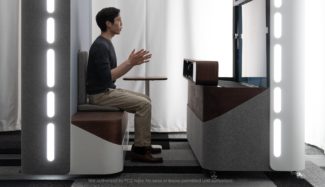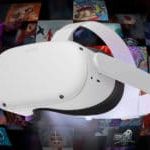Google’s research into light fields is bearing fruit with a glasses-free 3D display technology called “Project Starline” available at a few of its offices.
Google revealed the work as part of its annual developer conference this week. It is pitched as working like a “magic window” and relies on “custom-built hardware and highly specialized equipment” with advances in real-time compression, spatial audio, computer vision, and machine learning to provide a sense of being face to face with someone no matter the physical distance.
The image below posted by Google’s Vice President of AR and VR Clay Bavor offers a look at the substantial footprint for the system while it is used in one of Google’s offices.
Google also posted a video showcasing the technology used for some person-to-person interactions said to provide “a sense of volume and depth that can be experienced without the need for additional glasses or headsets.” The company says it is planning to trial deployments with enterprise partners later this year.
We tested some early-stage glasses-free light field display technology in 2018 and it required years more development and enormous investments to improve brightness and cost enough to put it within reach of average consumers. In our 2018 demonstration from Light Field Lab, for instance, the 3D effect only worked if you kept your head in a very specific area relative to the display. Indeed, even with Google claiming key breakthroughs in its efforts to prove its glasses-free 3D display technology as a direction “technology can and should go”, the company cautions that only “some of these technical advancements” are likely to make it into its communication products.
Still, we’d love to go eyes-on with Project Starline at some point for a better sense of its use cases and the investment Google will need to spend to bring its advancements into wider use.






